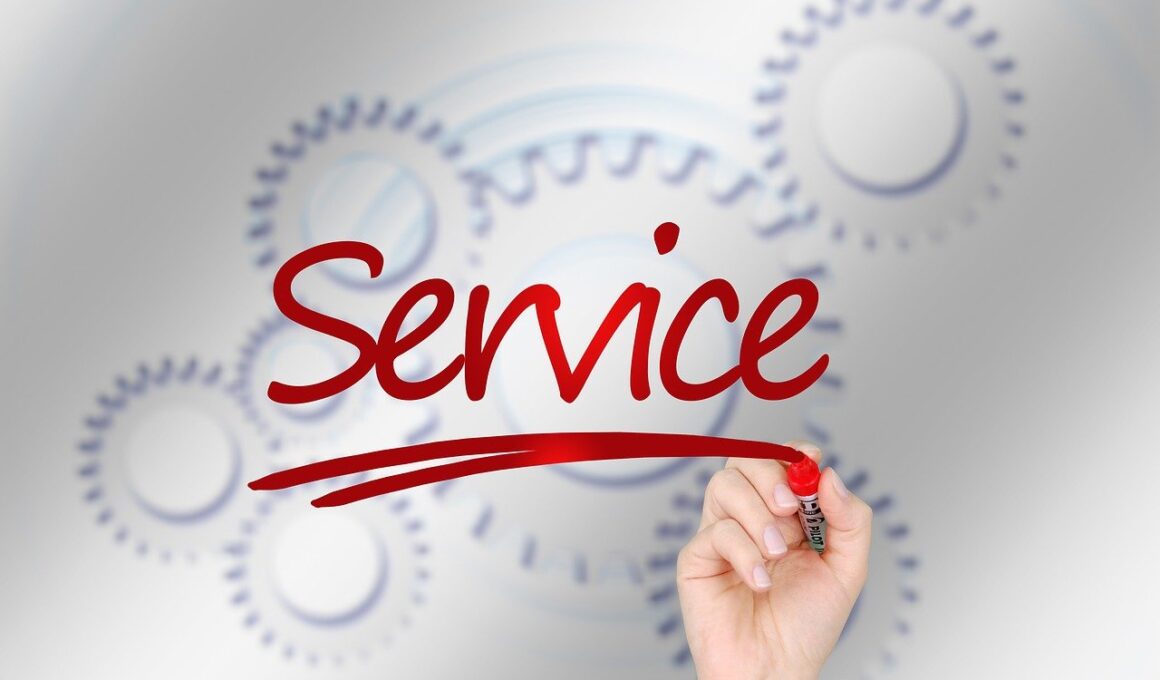Avoiding Common Mistakes in Social Media Complaint Handling
Customer service is evolving rapidly in the digital age. Social media platforms have changed the way businesses engage with their customers. Handling complaints effectively is crucial, as public posts can shape a brand’s reputation. It’s essential for companies to navigate this landscape carefully and avoid common pitfalls. One of the biggest mistakes is ignoring or deleting negative comments. This can lead to customer outrage and damage trust. Instead, companies should acknowledge the issue publicly, and offer solutions. Engaging with customers shows you care about their experience. Another mistake is responding defensively, which can escalate the situation. Complaints should be met with empathy, and not retaliation. Training your customer service representatives to handle complaints gracefully is vital. Don’t rush to reply; take time to gather all information before crafting a response. Sometimes, taking a conversation to a private message avoids public conflict and shows commitment to resolving the issue. Create a structured approach for handling complaints; this should be a part of the company culture. Remember, every complaint is an opportunity for improvement and customer loyalty.
Understanding the different social media platforms is crucial in complaint handling. Users of various platforms might expect different responses. For instance, Twitter is often used for quick, concise communication. Therefore, crafting short, effective messages is key. On the other hand, Facebook might support longer discussions where in-depth solutions can be explored. Training your team to recognize these nuances can lead to more effective complaint resolution. Consider utilising tools and software designed for social media management. These can help track and organize customer feedback, ensuring no complaint goes unnoticed. Additionally, be mindful of public perception. A well-handled complaint can showcase your brand’s customer-first attitude. Sharing success stories can further build trust with your audience. After resolving a complaint, following up with the customer is an effective strategy to ensure satisfaction. This shows that you value their input, enhancing overall experience. Encourage customers to share their success stories by tagging your brand or using a unique hashtag. This approach not only enriches engagement but also promotes positive public relations. Always remember, being responsive can change a complaining customer into a loyal ambassador for your brand.
Developing a consistent voice in social media is essential for your brand. This voice should reflect your company’s core values and mission. A strong, empathetic voice helps create connections with customers, making them feel understood and valued. Consistency in tone can prevent misunderstandings when addressing complaints. Aim to keep communications professional but approachable. Additionally, avoid using jargon; instead, use everyday language that customers will understand easily. Responding promptly is another critical aspect of complaint handling. Studies show that swift replies can significantly enhance customer satisfaction. Aim to acknowledge complaints within an hour, and provide a timeline for a full response. Customers appreciate transparency; let them know you are working on resolving their issue. Regularly review your response times to identify areas needing improvement. Don’t forget about the power of visuals in complaint response. Sometimes, infographics or videos can illustrate solutions better than text. Consider creating a library of visual materials that can help clarify how to resolve common complaints. Engaging with customers through various formats demonstrates a commitment to finding the best resolutions possible. Always strive for improvement, as enhancing customer service is an ongoing journey.
Leveraging Feedback for Improvement
Feedback is a goldmine for understanding customer needs and behavior. It provides insight into areas where your product or service may be lacking. When customers voice complaints, they are often doing so out of a desire to see improvements. Use these insights to adapt your products or services based on customer feedback. Regularly gather data on common complaints; this can inform your business strategy moving forward. Analyzing complaint patterns can highlight recurring issues. Tackle systemic problems that lead to customer dissatisfaction head-on. Forging stronger relationships via social media involves creating a channel for consistent feedback. Create dedicated posts encouraging customers to share their experiences. This way, you can preempt complaints by addressing issues before they escalate. Showcasing how you incorporated past feedback into improvements can illustrate responsiveness. Trust-building is an essential component of customer loyalty, and demonstrating that their feedback matters is one of the best ways to build it. Transparency in how you address feedback is vital; customers appreciate knowing their voices contribute to change. This reciprocation fosters a community around your brand, leading to a more loyal customer base.
Another common mistake in social media complaint handling is lack of personalization. Generic responses tend to feel insincere, which can frustrate customers. Each complaint should be addressed uniquely, taking into account the specific issue and the customer’s history with your brand. Using the customer’s name and referencing previous interactions adds a personal touch to responses. It’s crucial to acknowledge the emotional aspect of complaints; people often vent online during frustrating experiences. Validating this emotion while providing a solution helps ease tension. Consider forming a team dedicated strictly to social media complaints. This specialization ensures that complaints are addressed efficiently and knowledgeably. Ensure that all team members are well-versed in the company’s policies and training protocols for resolving complaints. Their understanding allows them to respond appropriately and efficiently. It’s important to follow social media trends so that you can speak the users’ language. Being current with trends makes your brand relatable and accessible. Adaptability is key; responding to complaints with innovations based on current social media trends can show that you are engaged with your customers. Building this rapport can transform complaints into opportunities for stronger connections.
Utilizing Analytics for Strategic Improvement
Analytics play a significant role in understanding customer interactions on social media. Utilize analytical tools to measure engagement rates and response times. Insights from these measurements can highlight your strengths and weaknesses. Understanding peak complaint times can prepare your team for surges in customer feedback. A well-prepared team can manage complaints better, minimizing customer frustration. Regularly reviewing social media analytics also reveals the impact of changes you’ve implemented. Customers often respond positively to improvements; tracking this can enhance future efforts. Build metrics for success, such as customer satisfaction rates following complaint responses. Building a rewarding environment involves recognizing and rewarding team members excelling in complaint management. Encourage sharing best practices, fostering an environment conducive to continuous improvement. By leveraging these analytics, you can refine your messaging and customer service strategy. Analytics-driven decisions can lead to better, more consistent complaint handling. Make adjustments based on what you learn from customer interactions. Staying proactive can mean the difference between losing a customer and retaining loyal supporters. Additionally, encourage submission of feedback forms for future analysis, allowing for even more specialized improvements in your approach.
Lastly, remember that actions speak louder than words. Beyond responding online, ensure your products and services deliver on promises. If complaints are significant, it may indicate deeper issues within your offerings. Regular audits of your services can identify shortcomings before they become widespread issues. Additionally, evaluate your methods for handling complaints and keep your processes transparent. Customers appreciate knowing what to expect from your service. Promoting transparency through your social media communication can earn their trust. Consider hosting Q&A sessions where customers can voice their concerns directly. This creates a safe channel for feedback and complaint sharing. Collaborate with your team to prepare responses and protocols on handling frequently raised issues during these sessions. This can showcase your commitment to transparency while providing an opportunity to build community. Consistently invest in training for your team to ensure they keep up with best practices. Equip them with skills to turn potentially negative situations into opportunities for excellent customer service. Collect diverse feedback on these training sessions, adapting your approach as needed. In the competitive landscape of customer service, your ability to evolve sets you apart from the rest.


